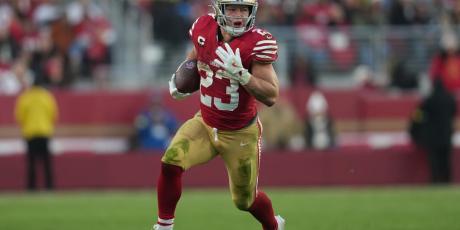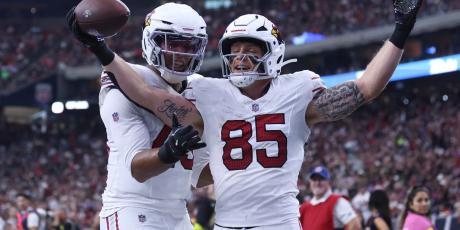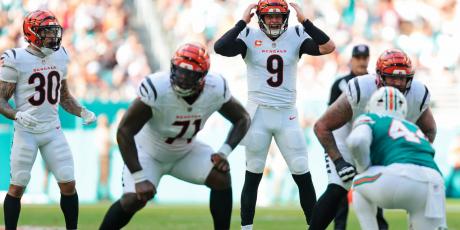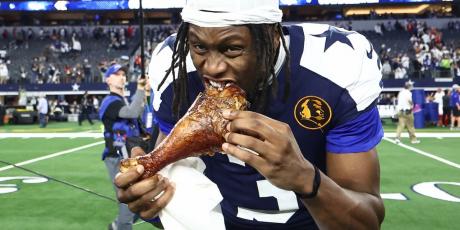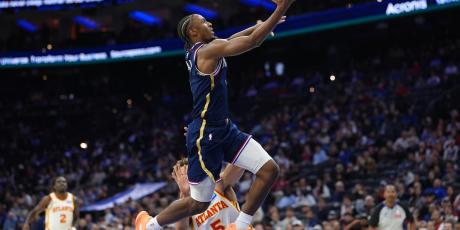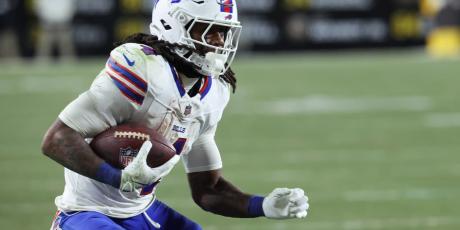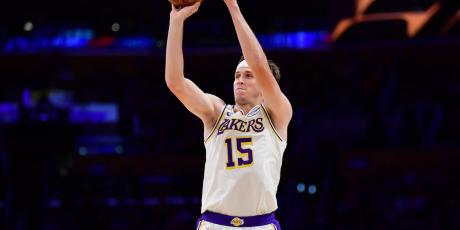Daily Fantasy Football: Rake, Soda Machines, and the One Percent

What’s a one percent difference?
I got my little brothers into fantasy football when they were quite young—think single-digits—because I wanted them to learn the value of being a degenerate at an early age. They were absolutely horrible in the beginning, mainly because seven-year olds suck at math. I still made them pay the full entry fee though. I counted that up for them.
I remember one time a league member jokingly sent an e-mail that he was dropping Terrell Owens for Diet Pepsi Machine (I ran the league through e-mail in those days). I received that at 8:00 pm. At 8:02 pm, my brothers e-mailed to say that they wanted to pick up T.O. and asked “Why would anyone drop Owens for a soda machine?” Those were fun days.
Anyway, I recently got them hooked on daily fantasy. They call me each Sunday to help them with their lineups, offering unsolicited advice that I actually once used, resulting in a $500 loss for the week. Brandon Pettigrew at the Niners!? They act like freakin’ kids sometimes.
One Sunday last year we were discussing where to play daily fantasy, and I was stressing the importance of minimizing the rake—the “fee” charged by the sites to play. I mentioned that it’s an important factor in where you play because it can really add up over the long run, and the eldest of the chipmunks (his name isn’t Alvin, but it could be) blurted out “What’s a one percent difference?”
Big mistake on his part, because he just got a lengthy lesson on rake reduction. And now you are about to as well. You have Alvin to thank. So with all due respect to the Wall Street protestors, this article is about the real one percent.
Can you overcome the rake?
The first thing anyone new to daily fantasy should ask themselves is whether or not they can profit. For some, the answer is simply no because, well, they aren’t any good. But for most, the rake can be overcome, even if not at first.
Some have compared daily fantasy to sports betting—an endeavor that results in only a handful of truly profitable long-term bettors—but there’s a major difference between the two. When you bet on sports (legally), you’re going up against the geniuses and their computers in Vegas. They spend their days using sophisticated models to make sure guys like you aren’t going to be able to beat them over the long run. Chances are, you won’t.
But you don’t need to worry about that when you play daily fantasy. You don’t need to beat Vegas’s sharps; you just need to beat some other dude on the other end of the interwebs. Sure, that might be a professional bettor, but chances are he’s closer to being like my Uncle Bruce—an interesting character who surely knows football, but likely isn’t all that informed on daily fantasy. You can beat Bruce.
Sportsbooks typically pay out around 95.2 percent of all money wagered. To break even with their typical 10:11 payout, you need to maintain a 52.4 winning percentage. Even though complete random guessing would result in a 50 percent winning percentage, sustaining a 52.4 winning percentage in the sports betting world is shockingly difficult.
Now, daily fantasy sites charge more to play than most sportsbooks, but again, you’re competing against other people like yourself. To become long-term profitable in daily fantasy, you just need to get yourself into the upper tier of daily fantasy players. That’s not incredibly easy by any means, but it’s very workable. As more novices come into the game, it will be even easier.
Reducing the Rake
So we know that sportsbrooks pay out 95.2 percent of money wagered. What about daily fantasy sites? Well, the industry standard is right around $8 in profit for every $10 you wager That’s because they take out 10 percent of all money wagered ($2 in a $10 heads-up league with $20 in total money), whereas sportsbooks collect an average of only around 4.8 percent (1 divided by 21, since they’re theoretically putting up $10 for every $11 you wager, i.e. you receive $21 on an $11 bet—your initial investment of $11 + $10).
In any event, it’s important to reduce the rake as much as possible. Take a look at the required winning percentages based on varying amounts of rake:
|
Rake (%) |
Win% |
|
10 |
55.6 |
|
7.5 |
54 |
|
6 |
53.2 |
That might seem like a trivial difference, but it’s huge. Let’s assume around six percent of daily fantasy owners can be long-term profitable with a 10 percent rake. The highlighted area in the bell curve below represents those players:
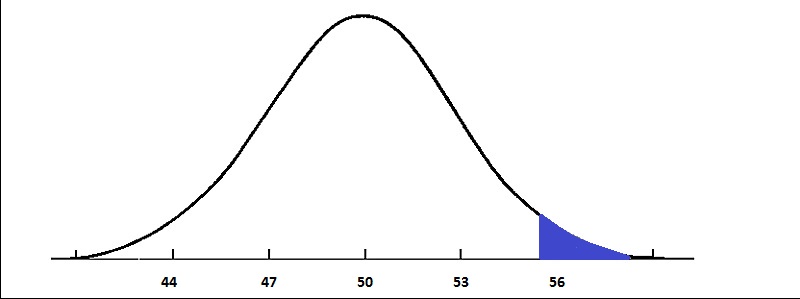
Now take a look at how that same distribution of players would perform with a six percent rake:
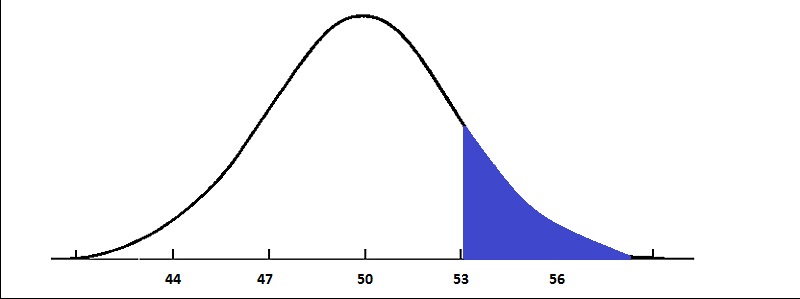
Reducing the required winning percentage from 55.6 percent to 53.2 percent has anamazing impact on the number of people who can be long-term winners; it’s about four times as great, depending on the original number who can be long-term profitable with a 10 percent rake. The point is that reducing the rake by even four percentage points can basically quadruple your chances of being profitable.
Size Does Matter
The numbers above are of course based on heads-up leagues—the primary league type in which we’ll participate this season. But at times, it can be beneficial to enter larger leagues, and the breakeven winning percentage is obviously different in those.
Below, you can see the winning percentage needed to break even in different league types with 11 percent and eight percent rakes.
|
8% Rake |
11% Rake |
|
|
H2H |
54.3 |
56.2 |
|
3-Man |
36.2 |
37.5 |
|
5-Man |
21.7 |
22.5 |
All of these numbers assume just one winner is paid out in each league. Again, these “minor” changes in breakeven winning percentages actually dramatically alter your profitability.
Different Paths
The first thing you need to do before entering any league is determine how much rake the site is charging you to play. You do that by dividing the total money paid out into the total money wagered, then subtracting that from 1. So a league that pays out $18 from a $20 pot has a rake of 1 – (18/20) = 1 – 0.9 = or 0.1 (10 percent). That 10 percent rake requires a 55.6 percent winning percentage to break even.
So “What’s a one percent difference?” It might be the difference between long-term profitability and a depleted bankroll by Week 10.

